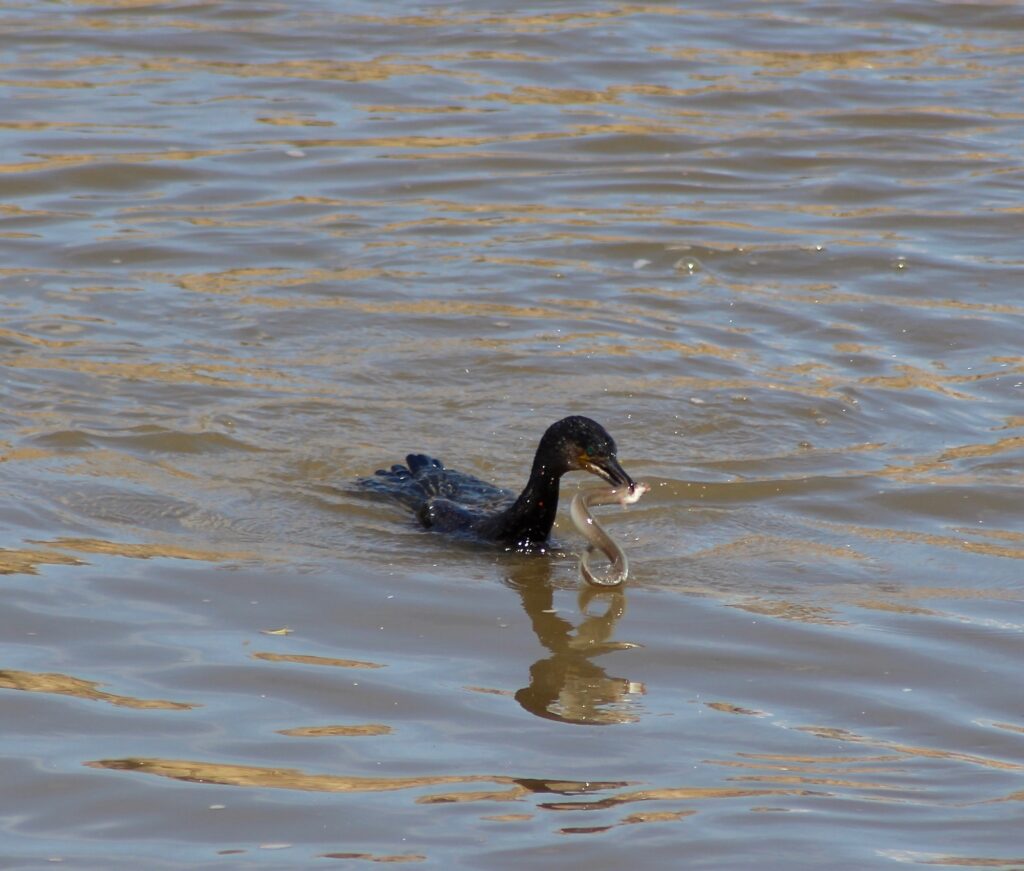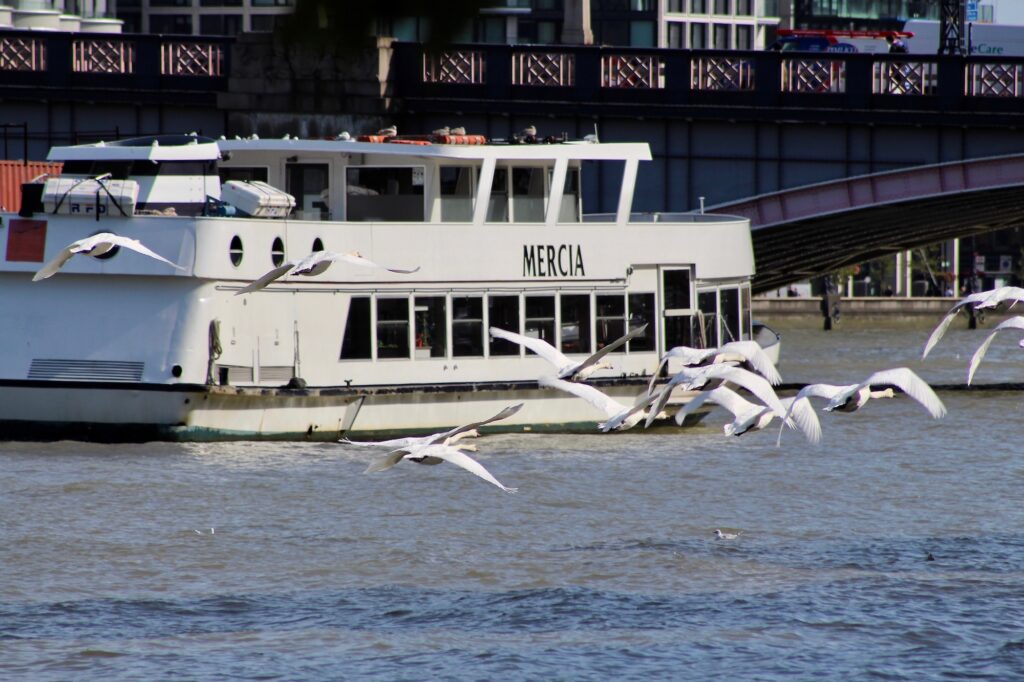Meeting birds along the central London tidal Thames
There is no doubt that there has been a marked renewal of marine life in the river since the dark days of 1957 when the Natural History Museum declared the Thames to be “biologically dead”. The London Natural History Society says that now “the Tidal Thames supports 120 species of fish and that over 60 species of bird nest in central London.” Some of these nest in riverside parks and feed there, or on the foreshore, and I have managed to catch a number of them on camera. Since my wider wanderings have been curtailed by lockdown and health considerations, what follows is of necessity a personal view but I will guide you to further sources at the end.


The Thames has had its problems over water quality ever since the arrival of humans when it became a convenient place to dispose of people’s waste and rubbish. The most notorious, but by no means the only notable example of pollution in recent times, was The ‘Great Stink’ in the hot summer of July and August 1858. The smell of untreated human waste and industrial effluent that affected the whole of central London, and particularly the Houses of Parliament, was thoroughly nauseating and made it virtually impossible to carry on normal business. Literally under and into the noses of our elected representatives, this miasma emanating from the river, was the catalyst that brought about the construction of London’s Victorian sewer system designed by Joseph Bazalgette and constructed in the 1860s and 70s.
Largely forgotten but even worse was the untreated toxic human waste regularly released into the river further downstream that played a significant part in the tragedy surrounding the sinking of pleasure boat the S.S. Princess Alice at Gallions Reach in 1878. After a fatal collision with the collier Bywell Castle, and horrific drownings at the time, many of the victims died later from infections contracted from the sewage floating freely in the river. This disaster, with a loss of about 700 lives, remains the deadliest inland shipping accident known in Britain.
In the mid 20th century, London’s by then already overloaded Victorian sewers were damaged during the Blitz in the Second World War and, writes Sophie Hardach in an article for the BBC, “post-war Britain did not have the resources – or it seems, the energy to fix the problem quickly.” She goes on to explain that with gradual improvements during the late 1960s “the river began to breathe again.” And the improvements continued. Hopefully the remaining problems of sewage overflow from the existing Victorian system during storms, will be sorted out with the inception of Tideway, London’s new ‘super sewer’, which is nearing completion.

There is always some bird action on the foreshore at low tide as the improvement of water quality has allowed the return of all kinds of microscopic creatures, which in turn have provided nourishment for those further up the food chain.


Above the foreshores, good for foraging when the tide allows it, the river embankments make good lookout posts for many of the birds in the area. Crows, ducks, geese and all kinds of gull can often be seen perching on the walls of the central London Thames. And herons have been spotted in the area too.







Higher up, there are even better lookout posts along the river. The Palace of Westminster has been home to a pair of peregrine falcons for a number of years and though I haven’t seen them myself, I have come across discarded feathers from some of their feasts littering the ground in Victoria Tower Gardens below.
However, there are other birds within reach, that sit in trees, on buildings, or wires above the paths and walkways. Look about you as you go and you will be sure to see some of them.




The Thames is a highway, a “liquid highway”, for boat traffic but also the track for a flight path. In WW I German zeppelins used the reflections of moonlight in the river to guide them to their bomb targets. In WW2 many Luftwaffe pilots heading for London followed the course of the river to inflict the fury of their blitz on the city.
But more peaceably, for a far, far greater stretch of time, the river has served as a flight path for birds. In 1902 naturalist C.J. Cornish, who lived on Chiswick Mall, was one of many to observe that the river “is a regular migration route for several species”.

Where this bevy of swans was off to, I don’t know but they were clearly flying upstream along the course of the river.
************************************
Though the improvement in the Thames environment has been spectacular there is one scourge harming river life that needs to be addressed: plastic. Plastic bottles, bags, containers, cotton buds, and other non-biodegradable detritus including covid masks, that litter the shores in great quantities. The environmental organisation Thames 21 is working hard with others to combat this, including the Port of London, who have set up a new litter survey, and they have organised a number of events for London Rivers Week, from October 24 – November 1, 2020, now in its fourth year. And there are people organising regular litter collection outings along the paths, banks, and foreshores of the river. Hopefully, with concerns and awareness about plastic pollution being raised by so many worldwide, it can be brought under control soon, to save our wildlife and to improve the look of our rivers and countryside.
Further Information on the following sites:
The Naturalist on the Thames: C.J. Cornish. An interesting book published in 1902, now online, with information on wildlife conservation and a discussion on purity of the water.
Louise Cripps: ‘The Thames is one of the cleanest rivers…’.
Sophie Hardach ‘How the River Thames was brought back from the dead’, BBC, 2015.
Dante Shepherd & Josh Jones: ‘Watching gulls in East London’.
Ian Young: ‘Anxious Birding’, a blog on birding and mental health.
Thanks also to Ian Young for help with identification of some of the birds. You can catch up with his bird posts on Twitter @ianyoung33